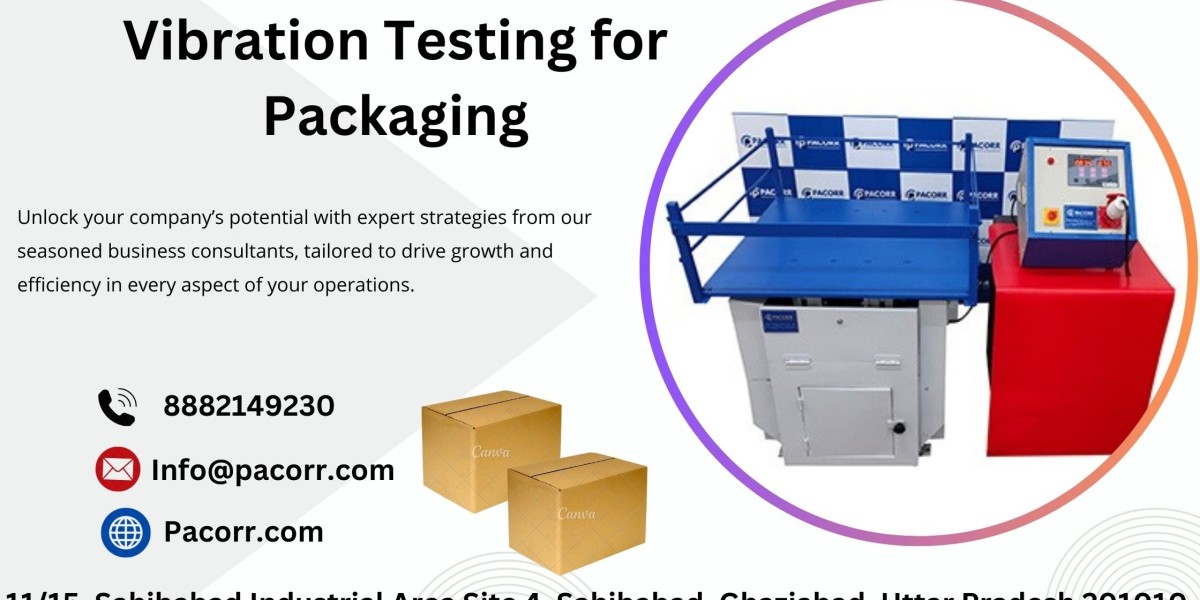To prevent these issues, vibration testing for packaging plays a crucial role in ensuring that packaging can withstand real-world shipping conditions and protect products effectively.
At Pacorr.com, we provide advanced vibration testing solutions to help businesses design stronger, more durable, and cost-effective packaging. In this article, we’ll explore the importance of vibration testing, its benefits, and how it works.
What is Vibration Testing for Packaging?
Vibration testing simulates transportation conditions to evaluate how well packaging can protect products from movement, shocks, and handling stress. This helps manufacturers identify and eliminate weaknesses in packaging before real-world shipping.
Common Causes of Vibration in Transit:
✔ Road Transport – Vehicle movement over rough roads, potholes, and sudden braking.
✔ Air Freight – Vibrations from turbulence, takeoff, and landing.
✔ Rail Transport – Continuous movement due to train vibrations.
✔ Warehouse Handling – Forklifts, conveyor belts, and stacking pressure.
By conducting vibration tests, businesses can ensure that their packaging meets high durability standards and prevents product damage.
Why is Vibration Testing Important?
1. Protects Products from Transit Damage
Fragile products such as electronics, pharmaceuticals, and glassware require impact-resistant packaging to prevent cracks, breakage, and malfunctions.
2. Reduces Returns and Financial Losses
Damaged shipments lead to higher return rates, additional costs, and dissatisfied customers. Vibration testing minimizes these risks, ensuring secure and cost-effective deliveries.
3. Ensures Compliance with Industry Standards
Many industries follow strict packaging regulations to guarantee product safety. Some common standards include:
- ASTM D4169 – Testing for shipping container durability.
- ISTA Standards – International Safe Transit Association packaging guidelines.
- ISO 13355 – Vibration testing for packaged products.
Adhering to these standards ensures safe transportation, regulatory compliance, and optimized packaging performance.
4. Optimizes Packaging Design and Cost Efficiency
Vibration testing helps manufacturers:
✔ Choose stronger yet lightweight materials for durability.
✔ Minimize excess packaging while maintaining product safety.
✔ Improve packaging design for better shock absorption and stability.
This results in cost-effective, eco-friendly, and efficient packaging solutions.
5. Enhances Customer Satisfaction and Brand Trust
When customers receive damage-free products, they develop confidence in the brand. Secure packaging reduces complaints and increases repeat purchases.
How is Vibration Testing Conducted?
1. Test Setup
The product, in its original packaging, is placed on a vibration testing platform (shaker table) to simulate real-world shipping conditions.
2. Vibration Simulation
The package is exposed to different types of vibrations to replicate transportation environments:
✔ Random Vibration – Mimics unpredictable movements during shipping.
✔ Sinusoidal Vibration – Simulates continuous mechanical vibrations from conveyor belts.
✔ Shock and Impact Testing – Evaluates packaging resistance to drops, stacking, and handling pressure.
3. Data Collection and Analysis
Sensors measure how the package responds to vibrations, allowing engineers to identify weaknesses and recommend improvements.
4. Packaging Optimization
Based on test results, manufacturers can:
✔ Enhance cushioning and padding to absorb shocks.
✔ Strengthen materials for better impact resistance.
✔ Modify package design for improved stability and weight distribution.
This ensures that packaging is durable and optimized for transportation challenges.
Industries That Benefit from Vibration Testing
1. E-Commerce and Retail
With the rapid growth of online shopping, packages experience multiple handling points before delivery. Vibration testing ensures secure shipping and fewer product returns.
2. Electronics and Fragile Goods
Devices such as laptops, smartphones, and medical equipment require shock-resistant packaging to prevent internal and external damage.
3. Pharmaceuticals and Healthcare
Medicines, vaccines, and lab supplies must remain stable and free from contamination. Vibration testing ensures safe transport and storage.
4. Automotive and Aerospace Components
Precision-engineered parts must arrive defect-free and undamaged. Vibration testing helps ensure secure shipments of high-value components.
5. Food and Beverage Industry
Glass bottles, packaged foods, and perishable goods require secure packaging to prevent leaks, breakage, and spoilage.
Why Choose Pacorr for Vibration Testing?
At Pacorr.com, we offer industry-leading vibration testing solutions tailored to meet specific business needs. Our services help businesses:
✅ Ensure packaging durability for secure product transportation.
✅ Meet global packaging standards (ASTM, ISTA, ISO).
✅ Reduce financial losses caused by transit-related damages.
✅ Optimize packaging to improve cost efficiency and sustainability.
With state-of-the-art testing technology and expert analysis, we help businesses develop strong, high-performance packaging solutions.
Conclusion
Vibration testing is a vital step in packaging quality assurance, ensuring product safety, cost savings, and customer satisfaction. Investing in advanced vibration testing allows businesses to reduce product losses, optimize packaging efficiency, and improve shipping reliability.
At Pacorr.com, we specialize in expert vibration testing solutions to help businesses design stronger, safer, and more reliable packaging.








